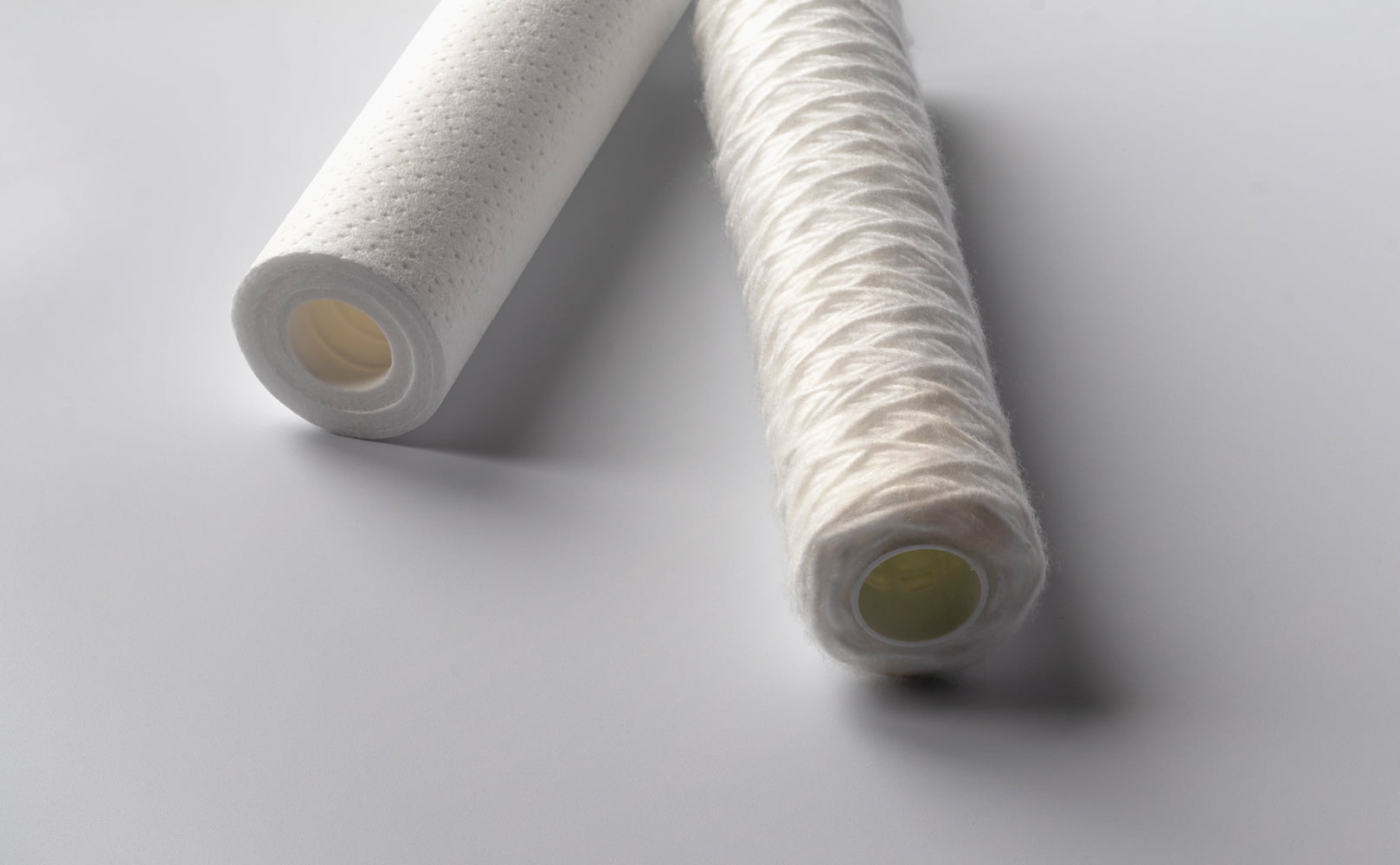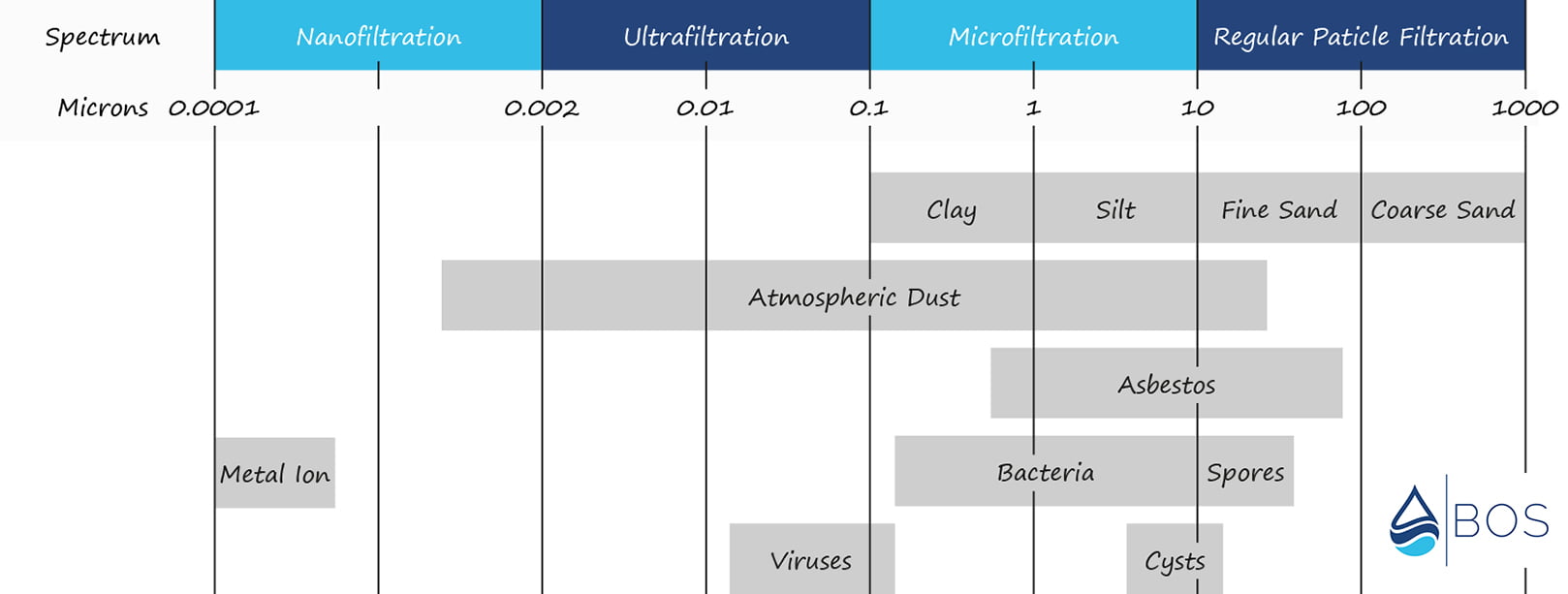5-Micron vs 20-Micron Sediment Water Filter – Which to Choose?
Written by: Gene Fitzgerald // Last Updated: Aug 15, 2023
This page may contain affiliate links. If you buy a product or service through such a link we earn a commission at no extra cost to you. Learn more.
Choosing between a 5-micron and a 20-micron sediment water filter comes down to knowing what contaminants you’re trying to remove.
It doesn’t make sense to invest in a very fine filter if all you need to remove is dirt and other larger contaminants.
If you’ve had your water tested and the tests indicate the presence of smaller contaminants, it’s time to think about more precise filters…
Key Takeaways
- Test your water in order to find out if a 5-micron or a 20-micron sediment water filter is needed.
- A 20-micron filter catches larger dirt and debris, sand, and some silt, asbestos, and dust.
- A 5-micron sediment filter removes all of the above plus certain bacteria and cysts, some mold, and even more asbestos, silt, and dust.
- Note that finer sediment filters tend to clog faster affecting water flow rate and pressure.
What Are Micron Ratings Used for?
Micron ratings are a standard measurement on the (sediment) water filter market. They state how fine particles can get before they are not captured by a filter anymore. For example, a 5-micron sediment filter will capture any floating particles with a diameter of 5 microns and above.
The Size of a Micron
How large is a micron exactly? It’s quite small – just 0.0001 of a centimeter. Spider webs tend to be just a couple of microns thick, and some mold spores can be as small as 3 microns. Lead dust is very fine, in some cases reaching a size of just 0.1 micron.
Nominal vs Absolute
If possible, always go with an absolute-rated micron filter rather than one with a nominal micron rating.
Nominal ratings are just provided as a rough guideline and not meant to be a precise indicator of a filter’s capabilities. Generally speaking, a nominal micron rating indicates that a water filter can remove about 70 to 80% of contaminants of the indicated size.
An absolute rating, on the other hand, guarantees that close to 100% of sediments of the indicated micron size will be removed.
About Micron Water Filters
When shopping for sediment water filters, you should always take micron ratings into consideration. If a filter has its absolute micron ratings listed, this means that the manufacturer has specifically tested it against contaminants of this size. As long as you’re buying from manufacturers with a good reputation, you will know you can trust their ratings.
5 vs 20-Micron Water Filters – Which Is the Right Micron Rating to Choose?
If your water supply contains contaminants smaller than 20 microns, then a 20-micron filter would be insufficient for adequate filtration. If most of your contaminants are above that size, however, you might be able to use a single 20-micron filter without any issues.
Many people choose a combined approach. This involves starting with a larger filter, such as 50 or even 100 microns, and adding more filters with decreasing sizes after that. The main issue with using smaller filters is that they may restrict your water flow. This is especially true for households where the water pressure is already low.
Test Your Water Supply
That’s why testing your water supply is the most important step in choosing a suitable filter. You should take the time to have your water tested so you will know exactly what types of contaminants you’re dealing with and what types of sediment filters you need. That way, you’ll avoid spending unnecessary money on filters that you don’t need, and will also prevent potential problems with your water flow.
20 Micron
Here is what a 20-micron sediment filter can remove:
- Larger dirt and debris like rust flakes
- Sand
- Large silt
- Some asbestos
- Some dust
5 Micron
Here is what a 5-micron sediment filter can remove:
All of the above plus
- Certain types of bacteria
- Certain types of cysts
- Even more asbestos
- Even more dusts
- Most silt
- Certain molds
Keep Water Pressure and Flow in Mind
Never underestimate the potential impact of a fine water filter on your water pressure. Always start with the largest possible filter and decrease the size of subsequent filters as appropriate. Using a filter that’s too small will likely cause water pressure problems and restrict your water flow.
If you have any questions about 5-micron vs 20-micron sediment filters please don’t hesitate to leave a comment below!
Information provided on BOS is for educational purposes only. The products and services we review may not be right for your individual circumstances.
We adhere to strict editorial guidelines. Rest assured, the opinions expressed have not been provided, reviewed, or otherwise endorsed by our partners – they are unbiased, independent, and the author’s alone. Our licensed experts fact-check all content for accuracy. It is accurate as of the date posted and to the best of our knowledge.



